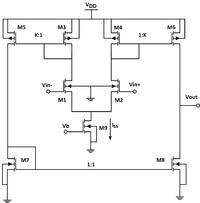Junus2012
Advanced Member level 5
Hello once again and again
as normal, I always has many questions since I started my analog project :-D.
the question is, How we assume in the operational amplifier driving a resistive load that all the biasing current is passing in this load while the amplifier is working with a negative feedback. from the principle of the negative feedback, the difference voltage at the operational amplifier is forced to be zero, thus the op-amp is under the small signal condition and the output current to the load should be zero (of we assume no transient time at the output).
Hope it is clear for you
Thank you
as normal, I always has many questions since I started my analog project :-D.
the question is, How we assume in the operational amplifier driving a resistive load that all the biasing current is passing in this load while the amplifier is working with a negative feedback. from the principle of the negative feedback, the difference voltage at the operational amplifier is forced to be zero, thus the op-amp is under the small signal condition and the output current to the load should be zero (of we assume no transient time at the output).
Hope it is clear for you
Thank you
